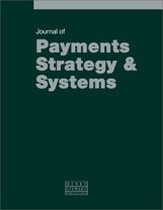Payments in the Middle East and Africa: An overview and review of implications for corporates operating in the region
Abstract
With significant growth potential and a young population aspiring to better living standards and governance, the Middle East and Africa represents an economic area that is less sensitive to global economic cycles and is capable of long-term sustained economic growth. An important and fundamental enabler in accelerating economic growth is financial infrastructure, and this area has undergone significant transformational change over the last 25 years, of which the greatest changes have been seen in the last five years. Though this is a region blessed with significant natural resources, there continue to be several serious challenges to bringing the entire region to a high growth path, with failed governance leading to civil unrest in a number of countries, and the lack of popular participation in building and improving financial infrastructure. But with the leapfrogging in infrastructure, achieving in far less time what took decades or more in the US, Europe or East Asia, the Middle East and Africa, and the significant increase in focus from global businesses in the region, there has emerged a compelling economic dimension to what was traditionally socio- political tradition shaping the development in the region. As the use of cash slowly decreases, manually initiated slow value transfer systems give way to intraday value transfers, merchant acquiring and mobile infrastructure expands, and multiple payment types emerge, businesses in the region have an increasing range of choices to support growing sales and profitability. There will be new demands for inclusion of capacity to transfer richer data, along with quicker payments as documentary credits yield to open account trade. As the paper concludes, however, it is trust and tradition rather than technology that will determine the pace at which change progresses with financial modernisation.
The full article is available to subscribers to the journal.
